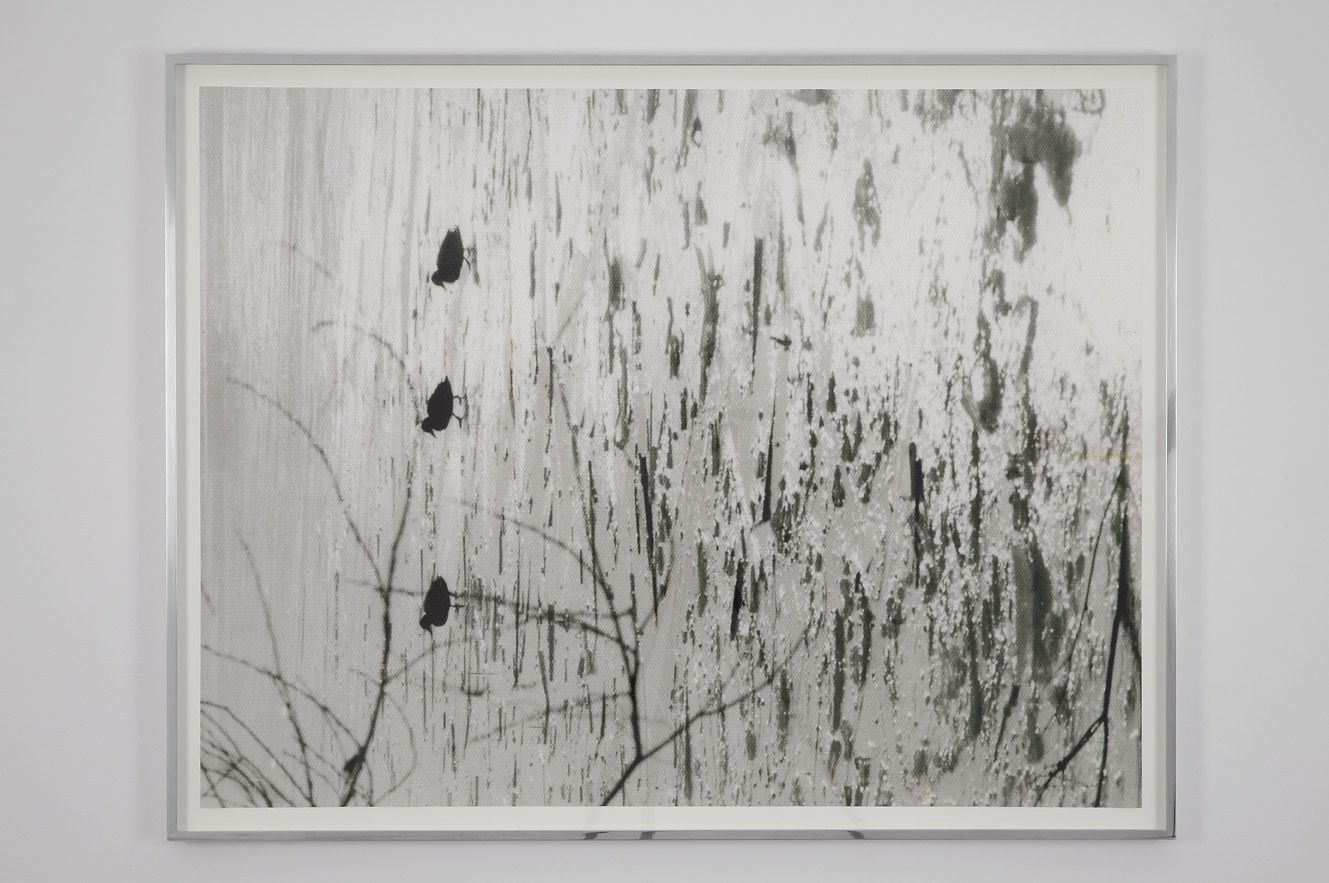Marlo Pascual Shatters Images
When Marlo Pascual was nominated for “Best Emerging Artist” at Rob Pruitt’s tongue-in-cheek Art Oscars in 2009, the gesture was a not-so tongue-in-cheek affirmation. Many who knew Pascual had been quietly watching her explore the photographic image throughout the 2000s, and were waiting for her to take her place in that crowded, confusing pantheon of fast-tracking New York artists. Sure enough, Pascual’s show two years ago at Casey Kaplan fulfilled all of the expectations, and the wry, stage-set-like visual tricks she played with her found, scanned, and reprinted imagery (many were 1950s actor portraits that were decorated with candle flames flickering over their eyes or obscured by the weight of a rock) felt like the work of a gifted talent who had finally been given the opportunity to do a solo and wanted to show off her range. There were so many clever visual puns and dramatic effects, it was almost hard to know whether Pascual was venerating or assaulting her images (maybe a little of both).
This week, two years later, a rather different Pascual opens her second show at Casey Kaplan. Here, we are treated to the same play of appropriated imagery, but there isn’t so much humor as gravity to the visual experiments. Pascual’s approach to her materials is subtler, more mature, a bit more somber, but also the work is far more lyrical. Nature and time seems to have replaced beauty and mortality as the keys on which Pascual prefers to play. Time being short, I bothered Pascual 24 hours before her new show opens and as she was in the midst of installing, to ask her a few questions about her work. Typical of a Tennessee native, she kindly obliged.
CHRISTOPHER BOLLEN: While your first show was predominantly focused on found photographs of individuals, this time there’s really an absence of human beings—at least human faces. In this way, the work seems to be getting away from a certain kind of nostalgia and seems to be veering into more non-figurative realms. Was this a conscious development?
MARLO PASCUAL: Well, there’s a figure in two of the works, but I tried to consciously move away from using images from the ’50s because I think it was distracting for the viewer. Originally when I was picking images, it was based on the fact that the images seemed overtly constructed. I liked photos where you could tell the subjects were posed and read as artificial, and that was more obvious in older photos. I’m still interested in that quality, but recently I’ve been using photos of objects or landscapes instead of people so that when I use a simple gesture, the gesture has more weight.
BOLLEN: You also seem to be relying on less “props.” Are you more interested in the images standing alone?
PASCUAL: The setup for the new show is different. It’s not based on image-object relationships, but rather simple gestures where I explore perspective and abstraction. In some pieces I created abstractions by turning images on their sides, and with other images I enlarged the image beyond the frame of the photograph to interact with the space and the viewer. So maybe those images are the props now.
BOLLEN: I love the cat photograph in this show. I’ve always thought pet photography had its own heavy psychological baggage that hadn’t been fully analyzed. What attracted you to this cat? Tell me the story of making this work?
PASCUAL: I liked the cat’s gaze, and I just bought it off ebay, scanned it, and had it enlarged and mounted to Plexi.
BOLLEN: In the past you’ve been lumped into a group of artists that I call the “Tennessee New York School” (charter members being Wade Guyton, Kelley Walker, Josh Smith, and Virginia Overton). But I don’t think your work is all that similar to theirs. Do you see any connections or influences in these Tennessee friends? Or is there a new Pictures Generation emerging with other contemporary artists like Elad Lassry that you connect more with?
PASCUAL: There are always influences between friends, whether it’s visible or not. But I think your work turns out different because of your personalities and your interests. I’m the only one that studied photography in school, and I think that interest has led me to where I am now. I definitely look at other artists using photography now, but although I might really like their work, I don’t really feel connected to them.
BOLLEN: I’ve always found a tension in your work between beauty and violence—the way you’ve held down images with rocks or lit their eyes with candles or punctured an image with a neon tube or a coat rack. The way you’ve cut and removed images in your latest work has some of that stored violence, but it seems much subtler. Do you think I’m crazy for finding your work so aggressive?
PASCUAL: No, I can see why you’d read some of the work as violent, because in some pieces I’m trying to break apart the image, or I’m attempting to disrupt the image. But I don’t think of the candle pieces as violent, I think that they’re kind of sad. And in the new work any violence that may be there is subtler.







